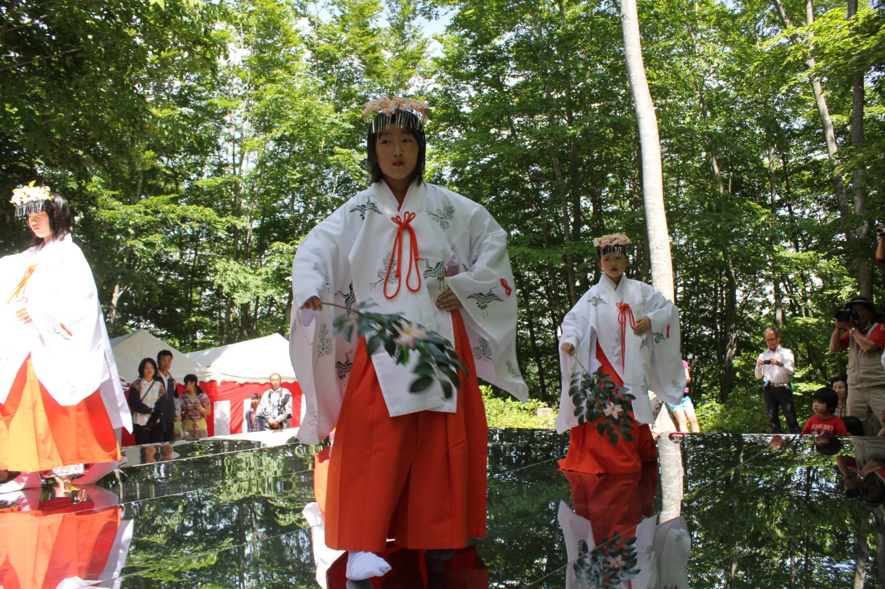
Beech forest reflected in the stainless steel mirrored plate of the Air Shrine's main shrine (Photo courtesy of Asahi Town).
Quietly tucked away deep in the mountains of Asahi Town in Yamagata Prefecture is the world’s only shrine to deify air: Kuki Jinja, or 'Air Shrine'.
Although designated a shrine, its roots are not strictly religious. Rather, it was built as a monument to the air after an elderly gentleman of the town questioned why there were no shrines that deified air, a vital element for all living creatures, even though there were shrines dedicated to gods of fire and water.
Asahi Town designated UN World Environment Day (June 5) as 'Asahi Town Air Day' by ordinance to spotlight the importance of air. The town is also calling for the designation of June 5 as a national holiday to provide all people in Japan with an opportunity to reflect on air quality and the global environment.
Sensing the Air
Asahi Town (pop. 6,300) is set in a rich natural environment surrounded by the Asahi Mountain Range, known as the Alps of Tohoku, including the O-Asahidake (1,871 m) and Ko-Asahidake (1,648 m) peaks of Mt Asahi and Mt Shirataka.
As we emerged from hiking up the 200-meter trail through the beech forest at the foothills, a path once trod by mountain priests, a stainless steel mirrored plate began to take shape in the open space.
The crystal clear, bright blue sky and sunlight filtering through the gently swaying trees in the beech forest were reflected in the glassy, mirror-like main shrine.

“Please go in.”
A town official guides me as I climb down the ladder about three meters. In the candlelight below, twelve unglazed wide-mouthed jars (kame) emerge from the darkness. I strain my eyes to see inside them, but they are empty because it is the very air inside the jars that is sacred.
I clap my hands together in prayer. The air inside the jars reverberates an echo. I can actually sense the air.
Read the rest of this article here to learn more about the history of the Air Shrine and Asahi Town's Air Festival. And find more great articles on the environment and the challenges of achieving the SDGs, on our new website Japan 2 Earth, sparking a transition on the environment and SDGs.
RELATED:
- [Hidden Wonders of Japan] Song, Dance, and Somen Noodles at Omiwa Shrine in Nara
- [Road Once Traveled] Japanese City Extends a Helping Hand through Water
(Read the story in Japanese at this link.)
Author: Mika Sugiura








